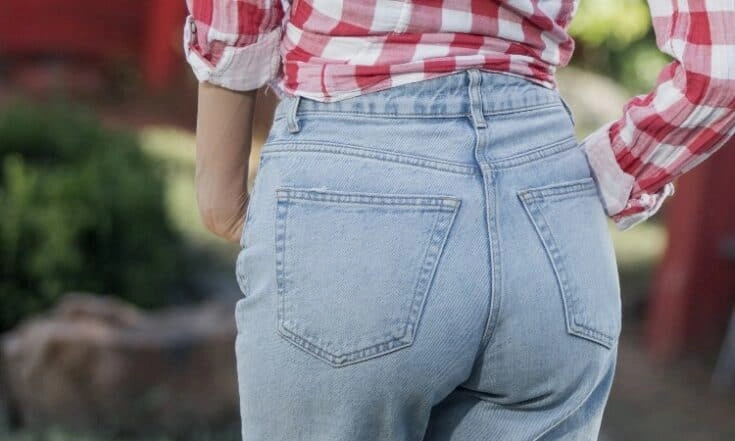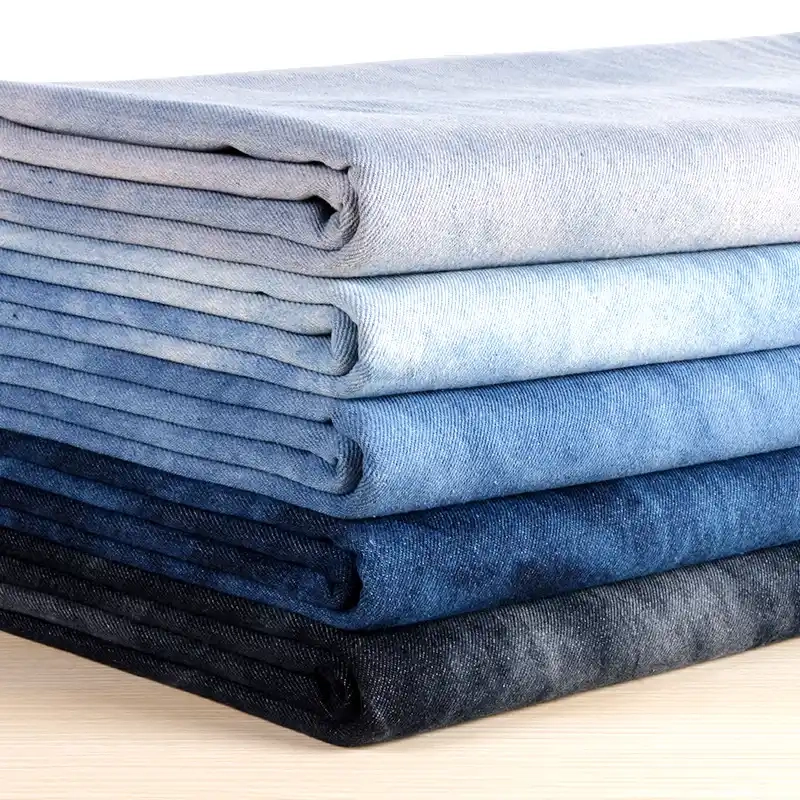Don't miss our holiday offer - up to 50% OFF!

what material is denim made of
What Material is Denim Made Of? Unraveling the Fabric of Our Lives
The question “What material is denim made of?” seems to have a simple answer. But to truly understand the blue jeans you’re probably wearing right now, we need to dive deeper. Denim is more than just a fabric; it’s a cultural icon, a symbol of rebellion, work, and fashion. Its story begins with a single, humble natural material and evolves through centuries of innovation.
This article will unravel the threads—literally and figuratively—to explore the core material of denim, its unique manufacturing process, its evolution, and its enduring place in our world, complete with real-world examples from the brands you know and love.

The Fundamental Answer: 100% Cotton
At its most basic, denim is traditionally made from 100% cotton. Cotton is a natural, soft, and breathable fiber that grows in a boll around the seeds of the cotton plant. Its durability, comfort, and ability to absorb dyes and finishes make it the perfect candidate for a hard-wearing fabric like denim.
However, stopping the explanation at “cotton” would be a disservice. What transforms raw cotton into the rugged, twill fabric we recognize as denim is a specific weaving technique and, most famously, a particular dyeing process.
The Anatomy of Denim: Weave and Dye
The Twill Weave: Creating the Diagonal Rib
Denim is defined by its twill weave. Unlike a simple plain weave (like a bed sheet), where threads go over and under alternately, a twill weave has a distinctive diagonal pattern. In denim’s case, the weft thread (the horizontal one) passes under two or more warp threads (the vertical ones). This creates a stronger, heavier, and more durable fabric that is also resistant to wrinkling. That classic diagonal rib on the surface of your jeans? That’s the hallmark of the twill weave.
Indigo Dye: The Soul of Blue Jeans
This is where the magic happens. In traditional denim, only the warp threads are dyed, typically with indigo dye. The weft threads are left their natural, white color.
Because indigo dye has a poor affinity for cotton—it doesn’t penetrate the core of the yarn deeply—it mostly coats the surface. As you wear and wash your denim, this outer layer of dye slowly abrades, cracks, and fades away. This process reveals the white core of the warp yarn and the white weft threads underneath, creating the unique, personalized fades, whiskers, and honeycombs that denim enthusiasts cherish. This isn’t a flaw; it’s a fundamental characteristic of the material.

The Evolution: Denim Blends and Modern Variations
While 100% cotton is the gold standard for purists, the answer to “what material is denim made of?” has expanded. To enhance performance, manufacturers began blending cotton with other fibers:
- Elastane (Spandex/Lycra): The most common blend today is adding 1-3% elastane to cotton. This introduces much-needed stretch, making jeans more comfortable, form-fitting, and adaptable for active lifestyles.
- Polyester: Blending cotton with polyester increases durability, wrinkle resistance, and makes the fabric dry faster. This is often used in performance-oriented or budget-friendly denim.
- Other Fibers: You can also find denim made with recycled cotton, Tencel™ (for softness and sustainability), or even hemp.
Real-World Case Studies: Denim in Action
To see these principles in action, let’s look at how different brands leverage the core material of denim.
Case Study 1: Levi’s 501® Original – The Purest Form
The Levi’s 501® is the archetype of traditional denim. For over 150 years, its recipe has been simple: 100% cotton, ring-spun for strength, and dyed with indigo using a shuttle loom to create selvedge denim. The rigid, unyielding feel of a new pair of 501s is a direct result of this pure cotton construction. As the wearer breaks them in, the cotton fibers mold to their body, and the surface indigo wears away to create a completely unique fade pattern—a biography of the wearer’s life in fabric. This is denim in its most authentic form.
Case Study 2: Wrangler Rigid Cowboy Cut – Built for Work
Wrangler’s Cowboy Cut jeans are another testament to the durability of 100% cotton denim. Designed in collaboration with rodeo cowboys, this denim is woven to be exceptionally tough and stiff initially, providing protection and lasting power for demanding physical work. The “rigid” finish means no pre-washing or softening, allowing the wearer to create their own fades through hard use, just as miners and cowboys did in the 19th century.
Case Study 3: AGOLDE 90s Pinch Waist Jeans – The Modern Stretch
Contrast the classic examples with a modern brand like AGOLDE. Their popular “90s Pinch Waist” jeans are often made from a blend of 98% Cotton and 2% Elastane. This small but crucial addition transforms the experience. The jeans retain the look and much of the hand-feel of cotton denim but offer significant stretch for comfort and mobility. This blend answers the demand for a silhouette that is both stylish and forgiving, showcasing how the core material has evolved for contemporary fashion.
Case Study 4: Nudie Jeans – The Sustainability Angle
Swedish brand Nudie Jeans focuses heavily on organic cotton. Their denim is almost exclusively made from 100% organic cotton, which is grown without toxic pesticides and synthetic fertilizers. Furthermore, their entire business model, which includes free repairs for life, is built on the longevity of the cotton material. They encourage customers to wear their jeans for as long as possible without washing to achieve high-contrast fades, then bring them in to be repaired and ultimately recycled—a full lifecycle centered on a single, natural material.
Conclusion: More Than Just Cotton
So, what material is denim made of? We’ve learned that the foundational answer is cotton. But the full story is about the twill weave that gives it strength, the indigo dye that gives it its soul, and the modern blends that give it new life.
From the rigid, pure-cotton legacy of Levi’s to the sustainable ethos of Nudie Jeans and the comfortable stretch of modern blends, denim’s core material has proven to be incredibly versatile and enduring. It’s a natural fiber that carries the marks of our lives, making it one of the most personal and universally loved materials in the world.
